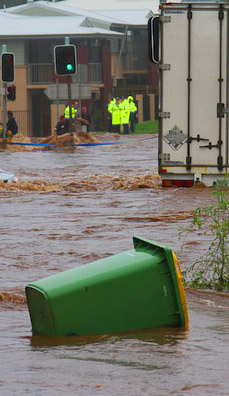Flood zone locals grow
 A new study reveals a significant rise in human occupation of flood zones.
A new study reveals a significant rise in human occupation of flood zones.
A recent study published in Nature shows human settlements in flood-prone areas saw an increase of up to 122 per cent between 1985 and 2015.
The research, conducted by international scientists, used a combination of global flood hazard data and annual high-resolution settlement footprint data, offering a comprehensive perspective on the evolving exposure to flood risks worldwide.
Urbanisation is a catalyst for economic growth, but this expansion into vulnerable regions comes with its own set of challenges.
It raises alarm bells regarding heightened susceptibility to natural disasters and the strain on essential public services and infrastructure.
Previous studies have shown a growing population at risk from floods, but a systematic global analysis of flood exposure trends was hindered by the absence of precise flood maps and human settlement data.
Lead researcher Jun Rentschler and collaborators tackled this issue by merging global flood hazard datasets with yearly high-resolution settlement footprint records spanning from 1985 to 2015.
The outcome revealed an 85.4% increase in human settlements during this period. Notably, regions facing the highest flood hazard exposure, where flooding depths exceeded 150 cm during 1-in-100-year flood events, experienced a striking 122% expansion.
This highlights the accelerated growth of human settlements in high-risk flood zones compared to low-risk areas.
Furthermore, the dynamics of flood exposure differed among regions and income groups. The East Asia and Pacific region emerged as the leader in settlements situated in the highest flood hazard zones.
Among all income categories, upper-middle-income nations hosted the largest share, with 60.8% of settlements located in these high-risk areas.
China played a prominent role in driving this substantial surge in flood exposure among upper-middle-income countries.
These findings hold significant global implications, particularly in the context of increasing frequency of extreme weather events attributed to climate change.
The full study is accessible here.








 Print
Print